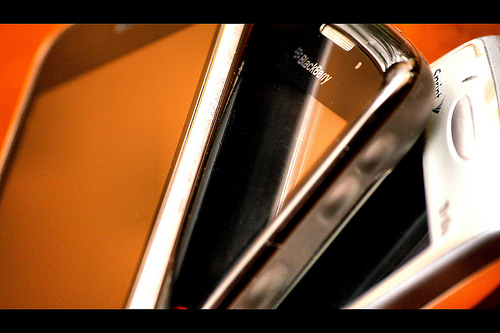AARP Eye Center
Why Aren't Older Adults Buying Smartphones?
By Jody Holtzman, November 1, 2012 03:33 PM

There's an app for that - but usage by older adults is stalled. Boomers and beyond have the spending power, but they aren't snapping up tablets and smartphones. Pew's latest smartphone numbers tell the story - smartphone usage has not grown beyond 11% among the 65+. And tablet ownership, despite many cute stories, has only grown to 13%. Yet you and I both know that that these phones and tablets provide significant utility, from easy access to discounts and savings to calculating insulin levels to preserving information. That is, the utility exists for those that have the phones.
For reasons that may range from worry about advertising targeting to cumbersome usability to price to youth-orientation of the apps, many older adults aren't convinced. So what could help eliminate barriers and engage them? Vendors must demonstrate interest in acquiring them as customers - because they already have functionality and capabilities that users of all ages need. Consider a few tactics and incentives to accelerate adoption:
Sponsor competitions and hacker incentives for app creation and device migration. Last month USAID sponsored a Hacking for Hunger weekend - in which software developers, online and in person, joined a round-the-clock marathon of software development aimed at solving the global issue of food insecurity. And this past week, the National Council on Aging received a $2 million grant from Atlantic Philanthropies to streamline the disparate processes that enroll older adults in programs that could reduce food insecurity. Sponsoring competition for innovation, as AARP just did at Life@50+, will also bridge the device and app gap. AARP's foundation and nonprofit peers could combine initiatives and incentives to create the next wave of apps that make a difference in people's lives. Get a few apps that highlight product discounts, devices and services, plans, into the hands of the 50+ population that does not have them now and may not see the benefit.
Target device deployment through special interest groups. Microsoft's Surface announcement and launch last week comes on the heels of the latest iPhone 5, now top-selling Samsung Galaxy and just before the upcoming mini iPad. This creates a competitive window of opportunity. Imagine if a carrier like Verizon or a Microsoft regional sales organization partnered with local nonprofits and social service support groups to contribute and distribute Surface tablets? These have adjustable touch (among other accessibility features), that could be especially useful to those with arthritis or Parkinson's disease.
Highlight useful applications in carrier demonstrations. Carriers like Verizon, Sprint, and AT&T are missing a sizable opportunity to convert feature phone loyalists to smartphone plans - searching online will find little from them indicating they want these customers. Where are the ads that show a person over the age of 50 enjoying the phone? Why not show how boomers and seniors can find travel and caregiving tips from any location, speak requests to Siri, get turn-by-turn spoken directions from Google? How about sponsoring a contest of how best to reach them? As the AARP and USAID initiatives prove, if you challenge talented people to be innovative - then engage the resources of large vendors like Microsoft, Google and Apple, the device gap will eventually just be an artifact that is so yesterday.
Photo via Phil Roeder on Flickr.























































